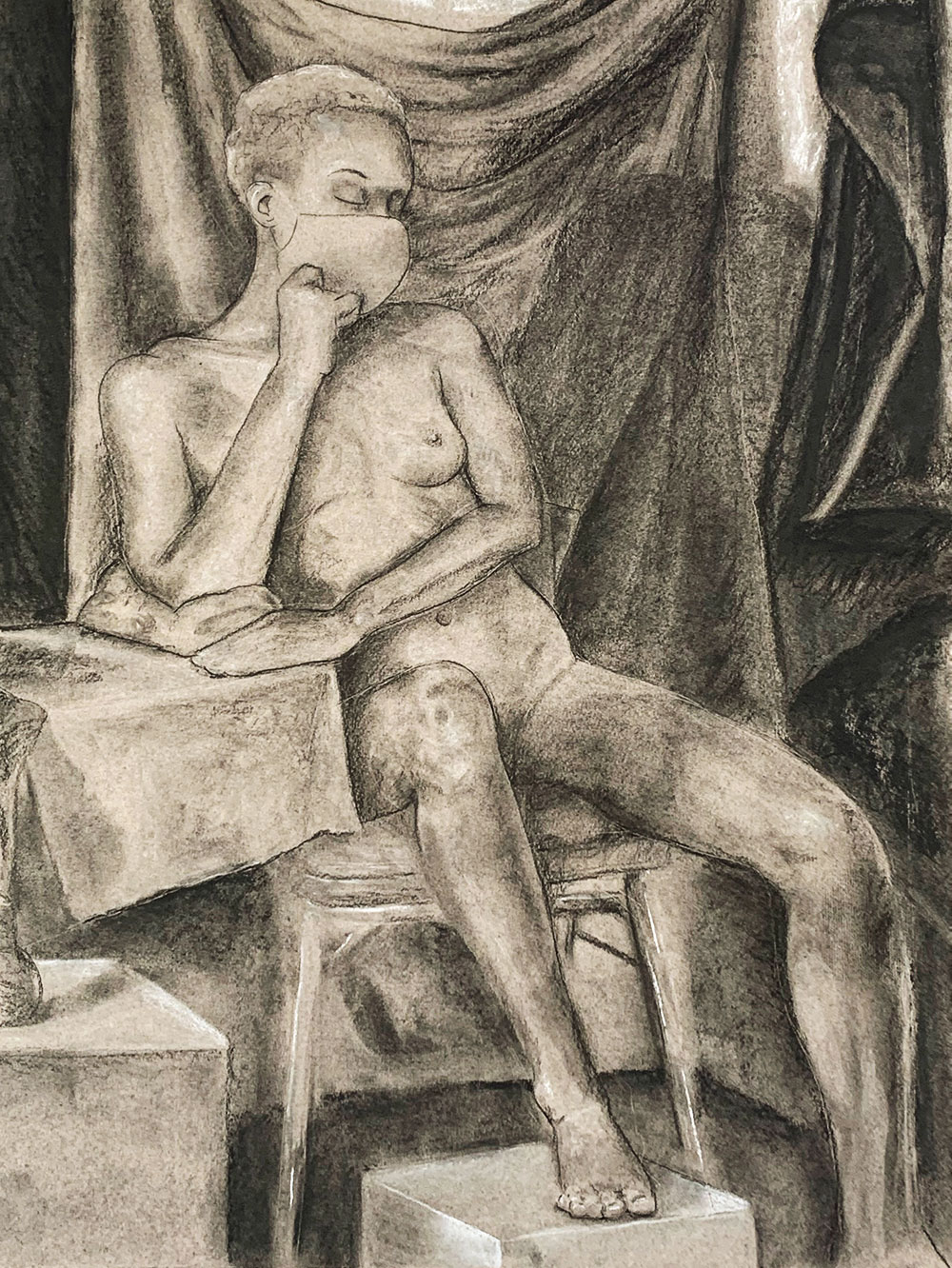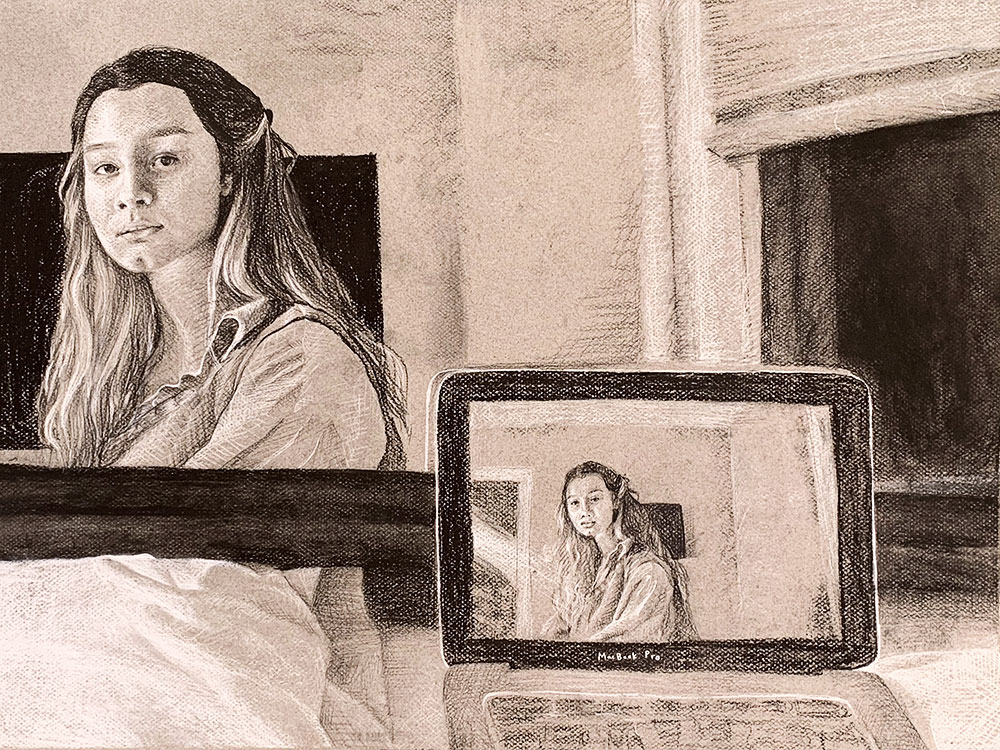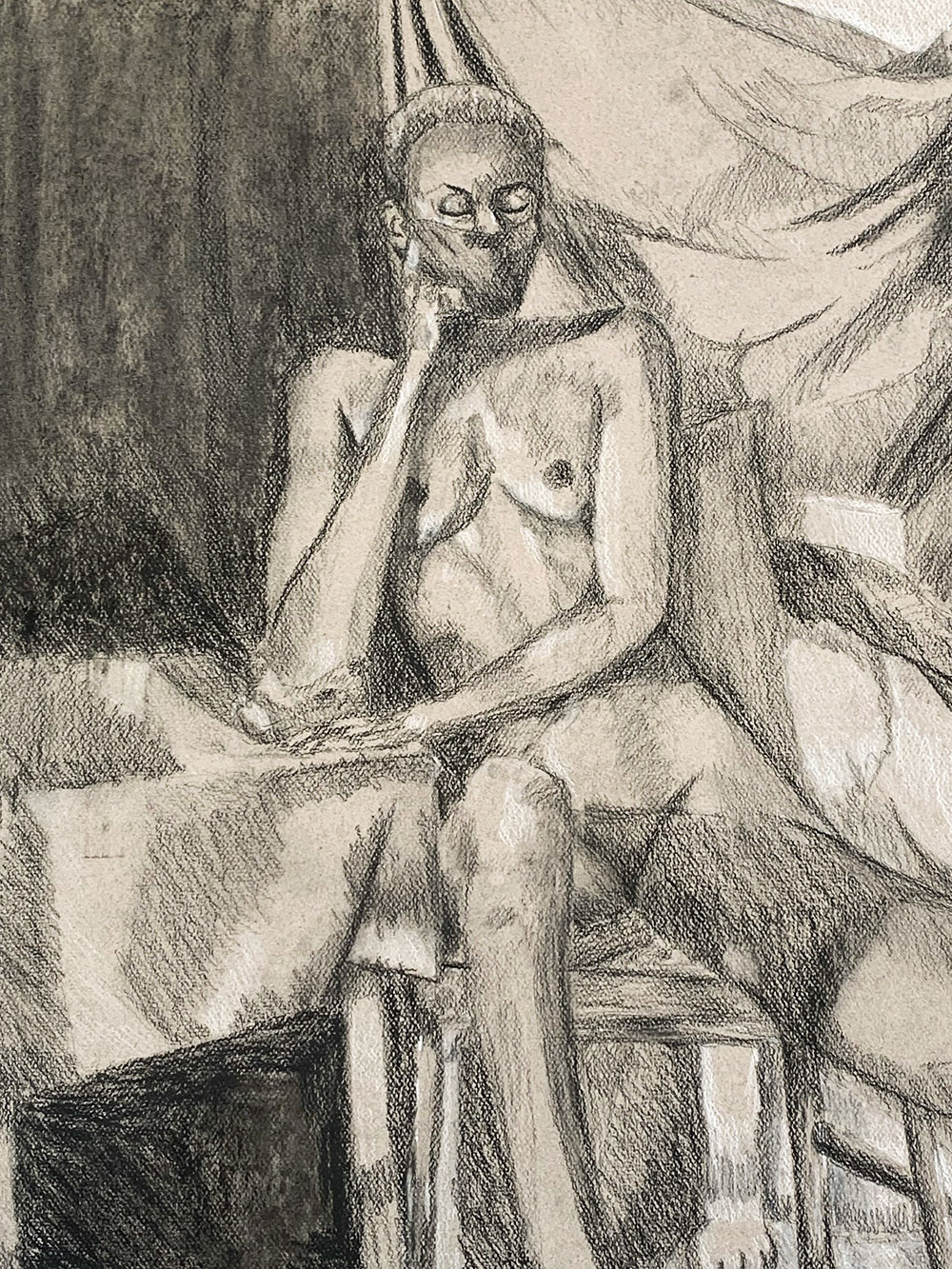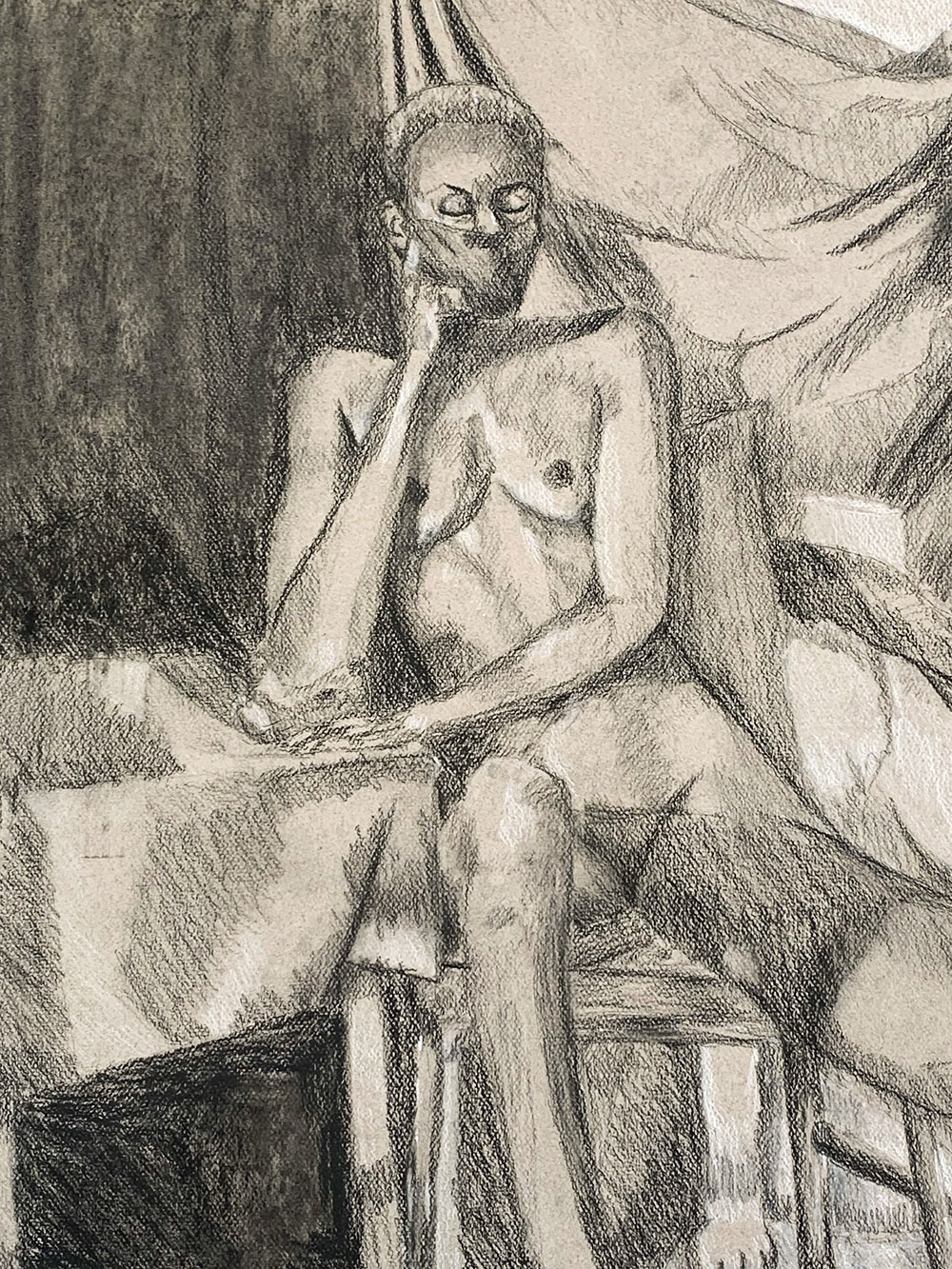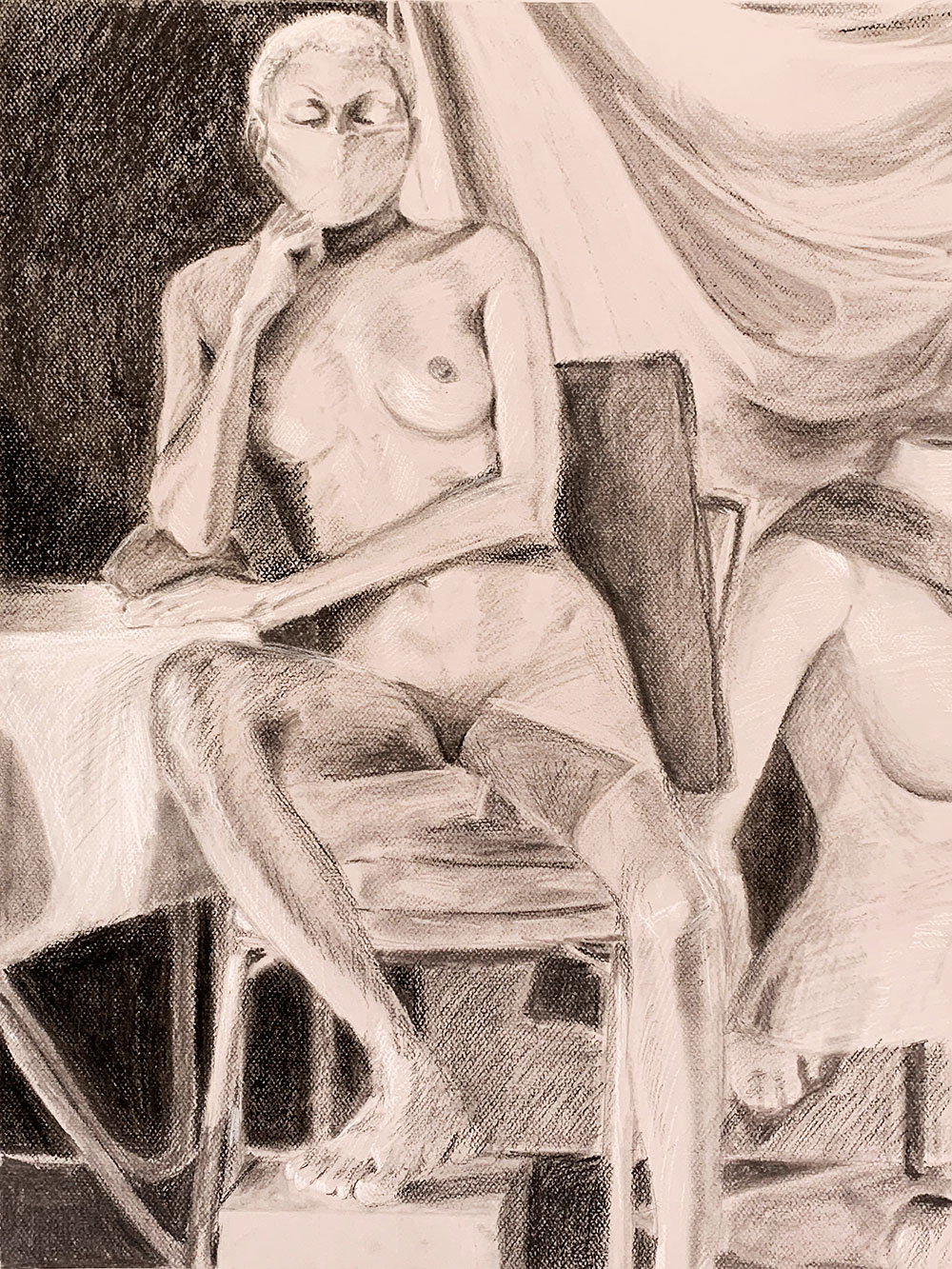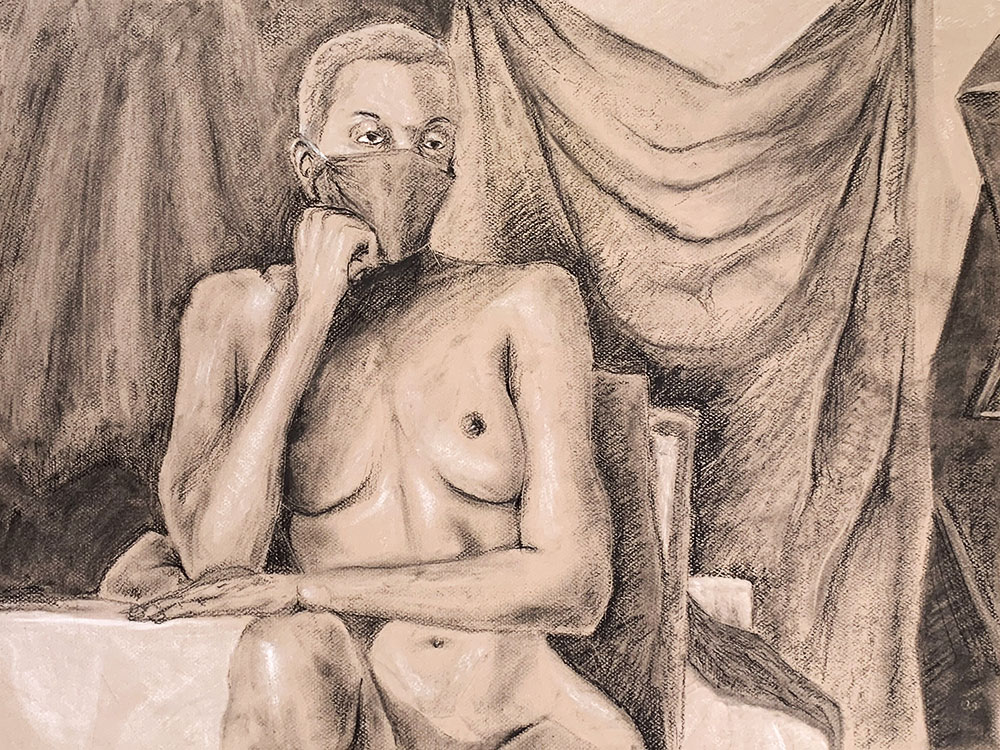Art 2213 | Life Drawing I
Life Drawing I is a drawing class with an emphasis on the basic forms and proportions of the human figure.
Below are descriptions of some of the assignments in the course with student work examples.
Sustained Gesture-Repetitive
Spontaneous drawing and redrawing of the most essential components/characteristics of a figure. Emphasis is placed on movement and the expressive posture of the figure.
- Students will make multiple drawings of the model with robust, confident line. Students will work quickly, responding to the model who will hold a single pose and rotate slightly every two minutes. The resulting drawings will document the model rotating in space.
Materials: Vine charcoal on 18"×24" Strathmore
Assignment Objectives:
- Develop hand-eye coordination and a sensitivity of touch
- Adjust pressure to create line variation for volume and form articulation
- Quickly assess and represent the expressive characteristics of the model/pose
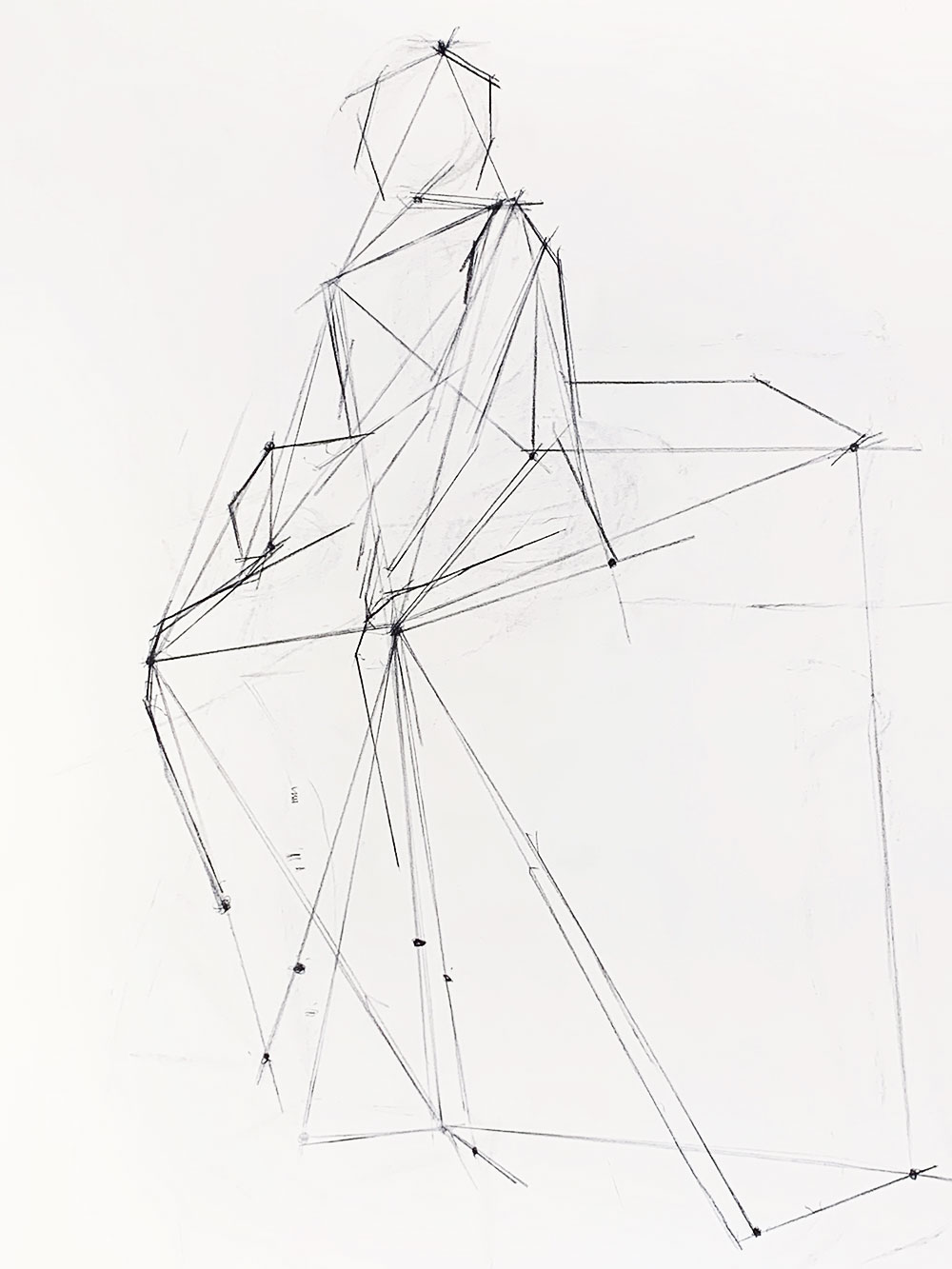
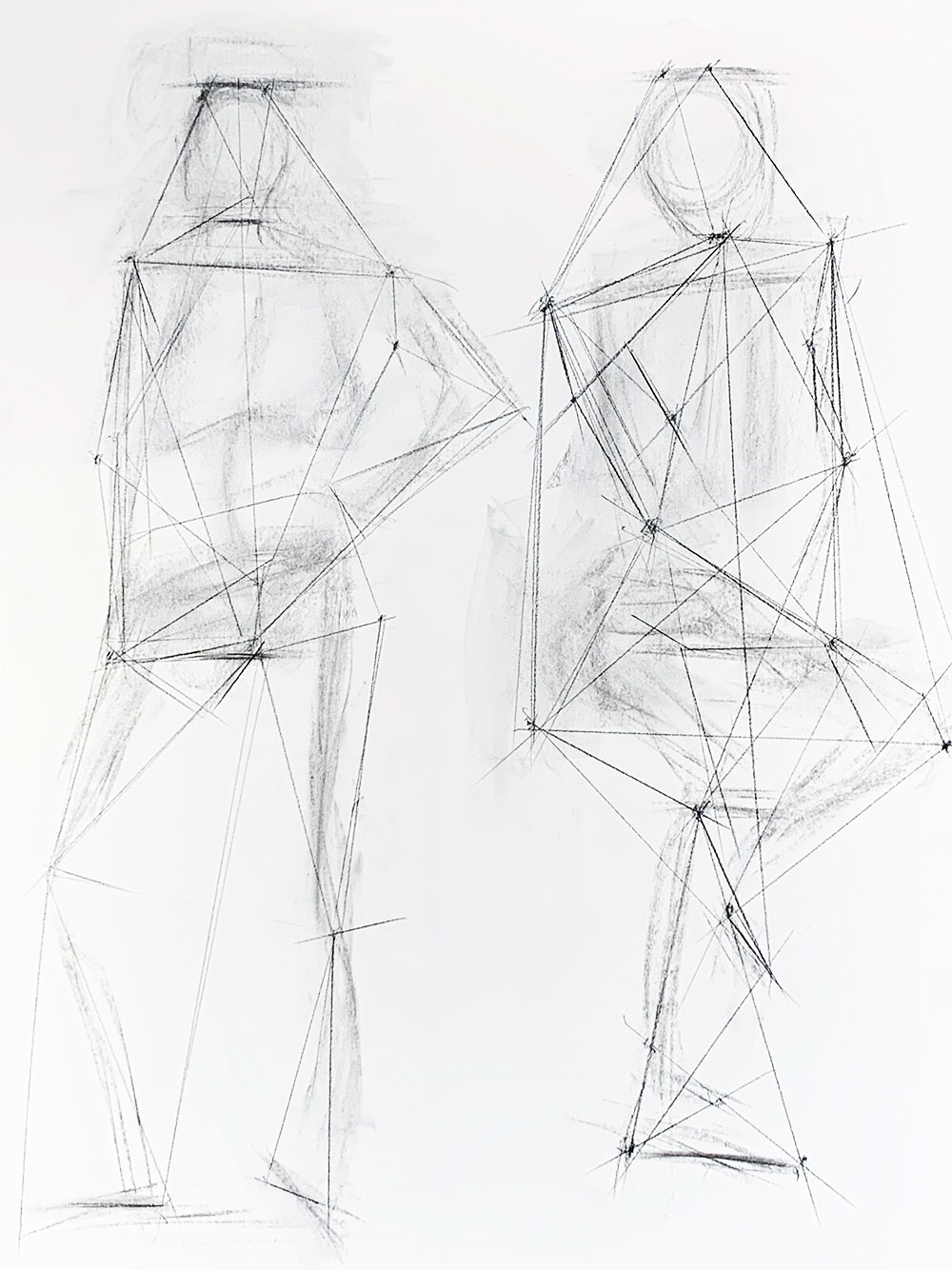
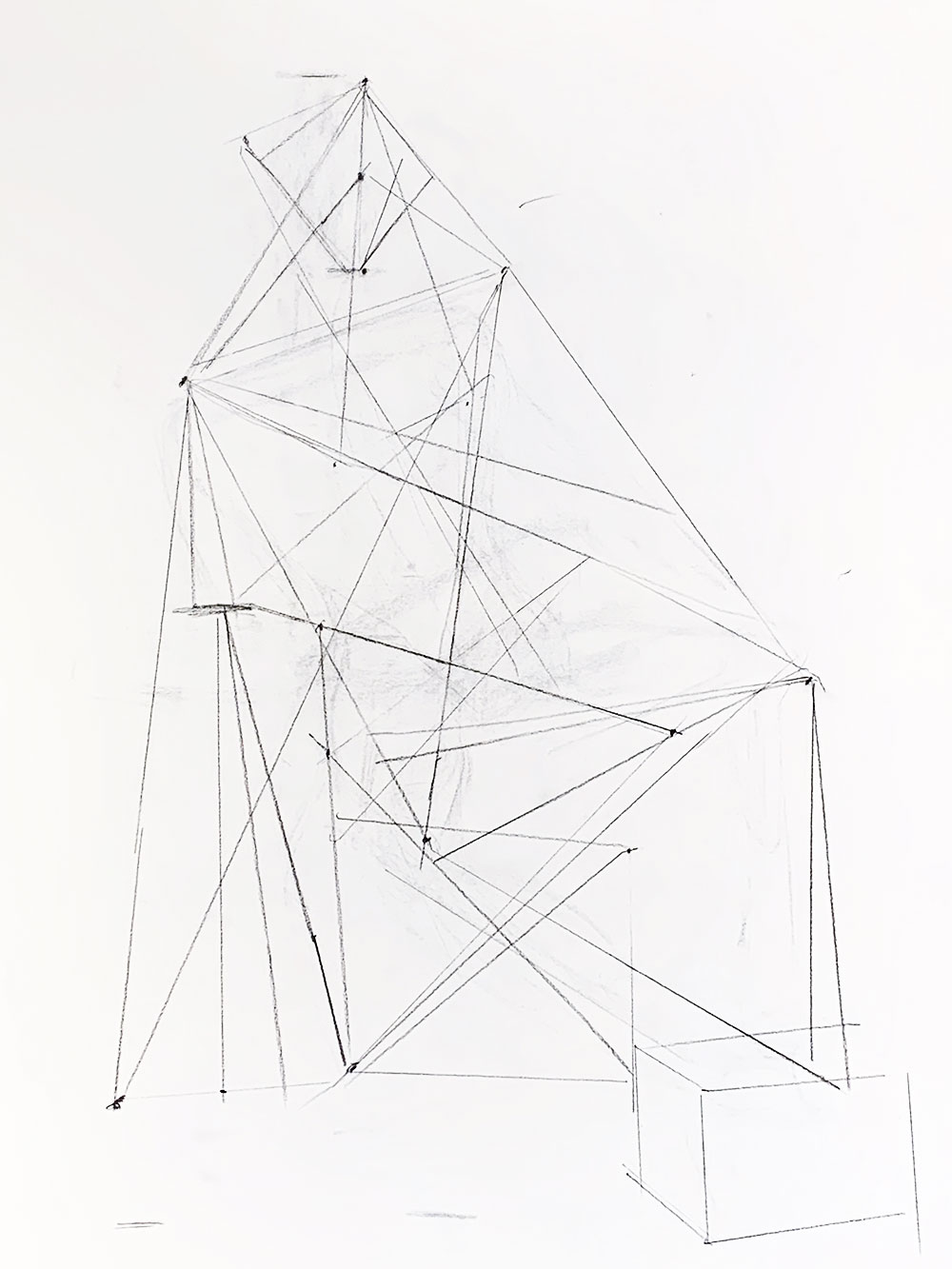
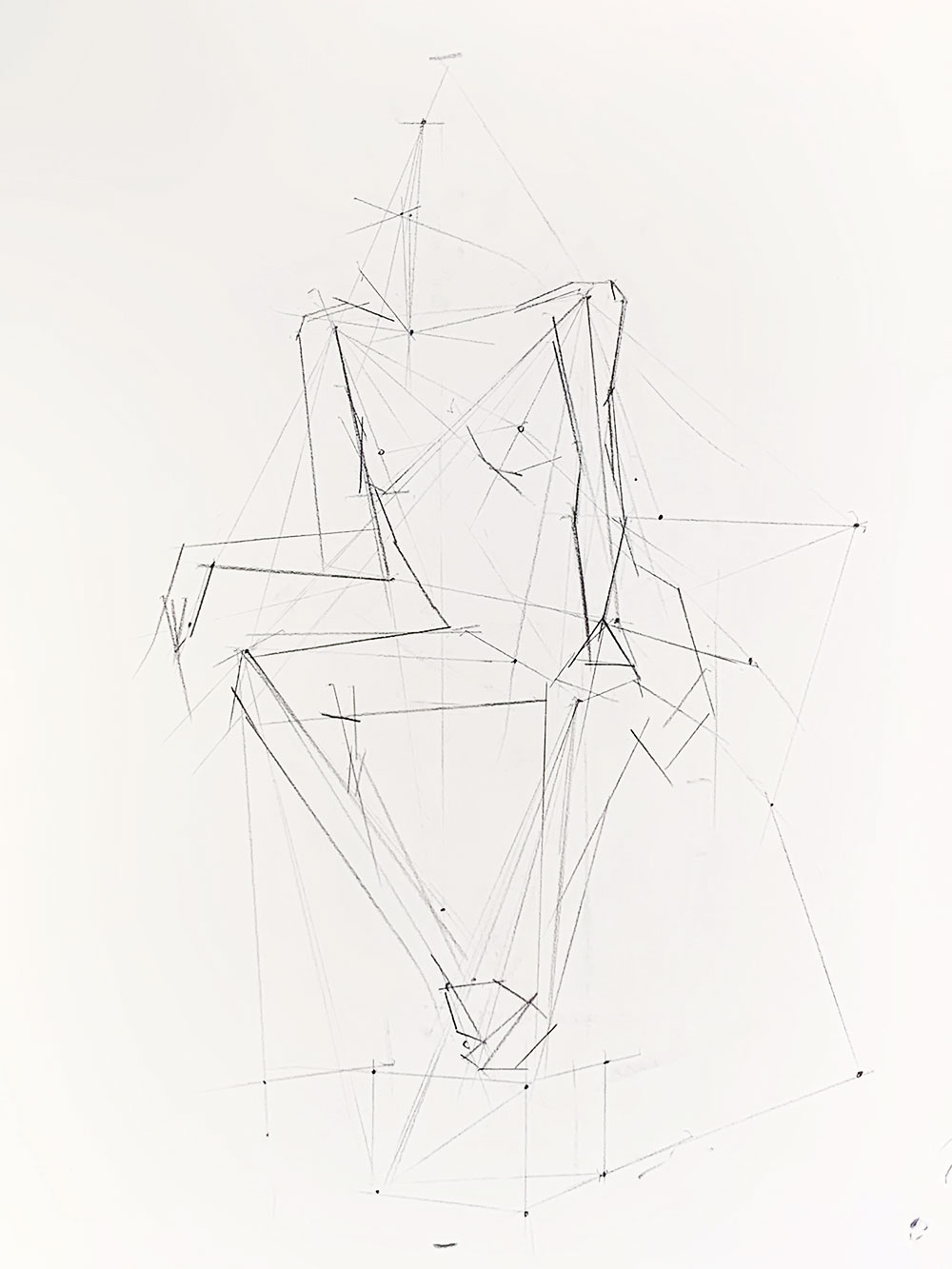
Sighting-A
Measuring process based on careful observation that aids in the translation of three-dimensional information into the two-dimensional space of a drawing. There are three applications of sighting: angles, proportions, and spatial relationships.
Students will make a single drawing of the model situated within a space. Students will develop the drawings in successive stages, rendering in layers, light-dark, and general-specific, being sure to reevaluate and refine the entire space of the drawing in a unified manner. Drawings will first be mapped-out gesturally, then refined using the three applications of sighting. All curved forms will be broken down into a series of overlapping angles.
Materials: Viewfinder, drafting triangles, vine charcoal, charcoal pencils, erasers, on 22"x30" Stonehenge
Assignment Objectives:
- Transparent construction/rendering and refining in layers
- Use axis lines for structure
- Three applications of sighting
- Line variation for volume, depth, and form articulation
- Create a composition that is expansive, dynamic, and balanced with the figure situated within a space
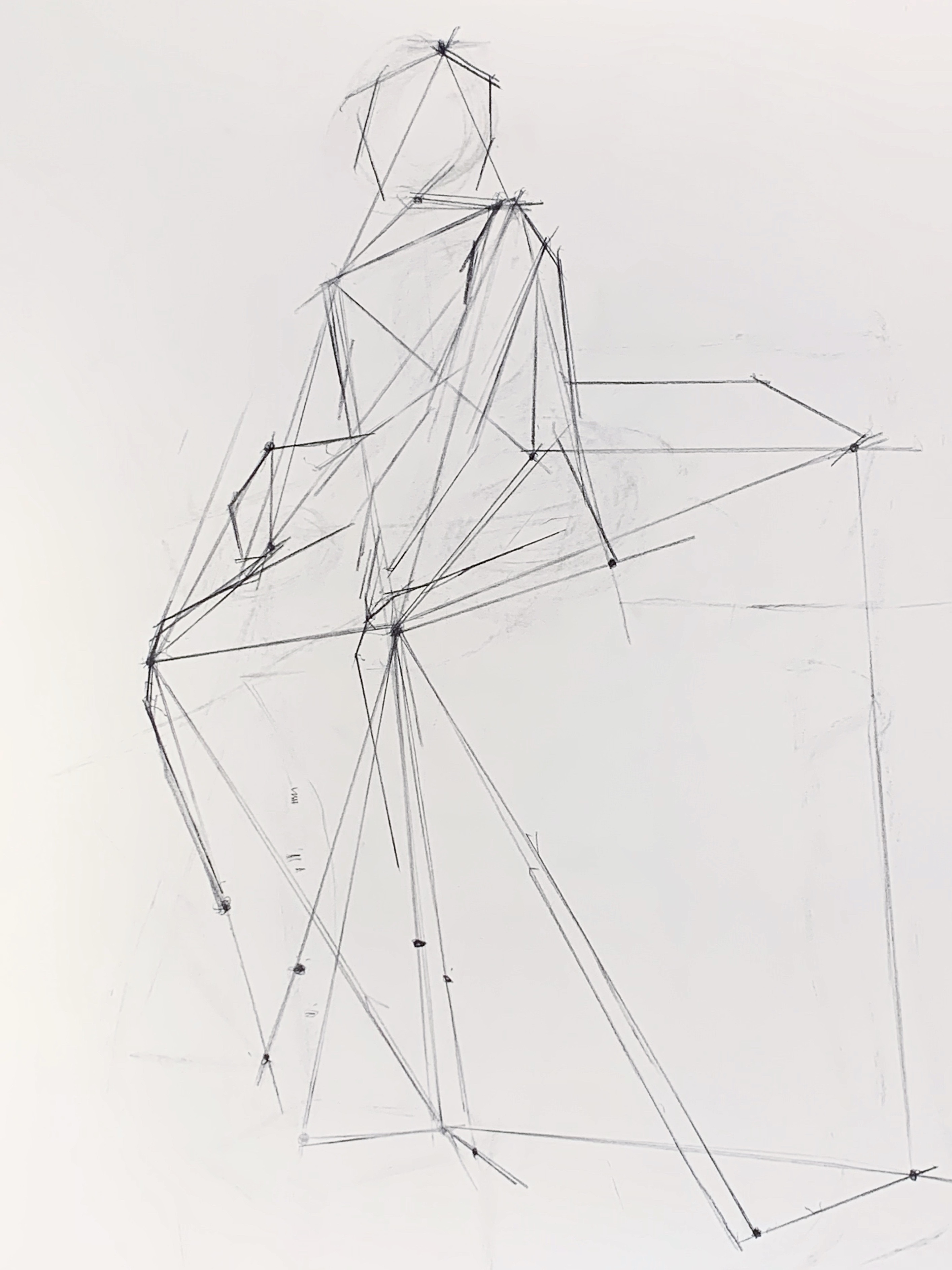
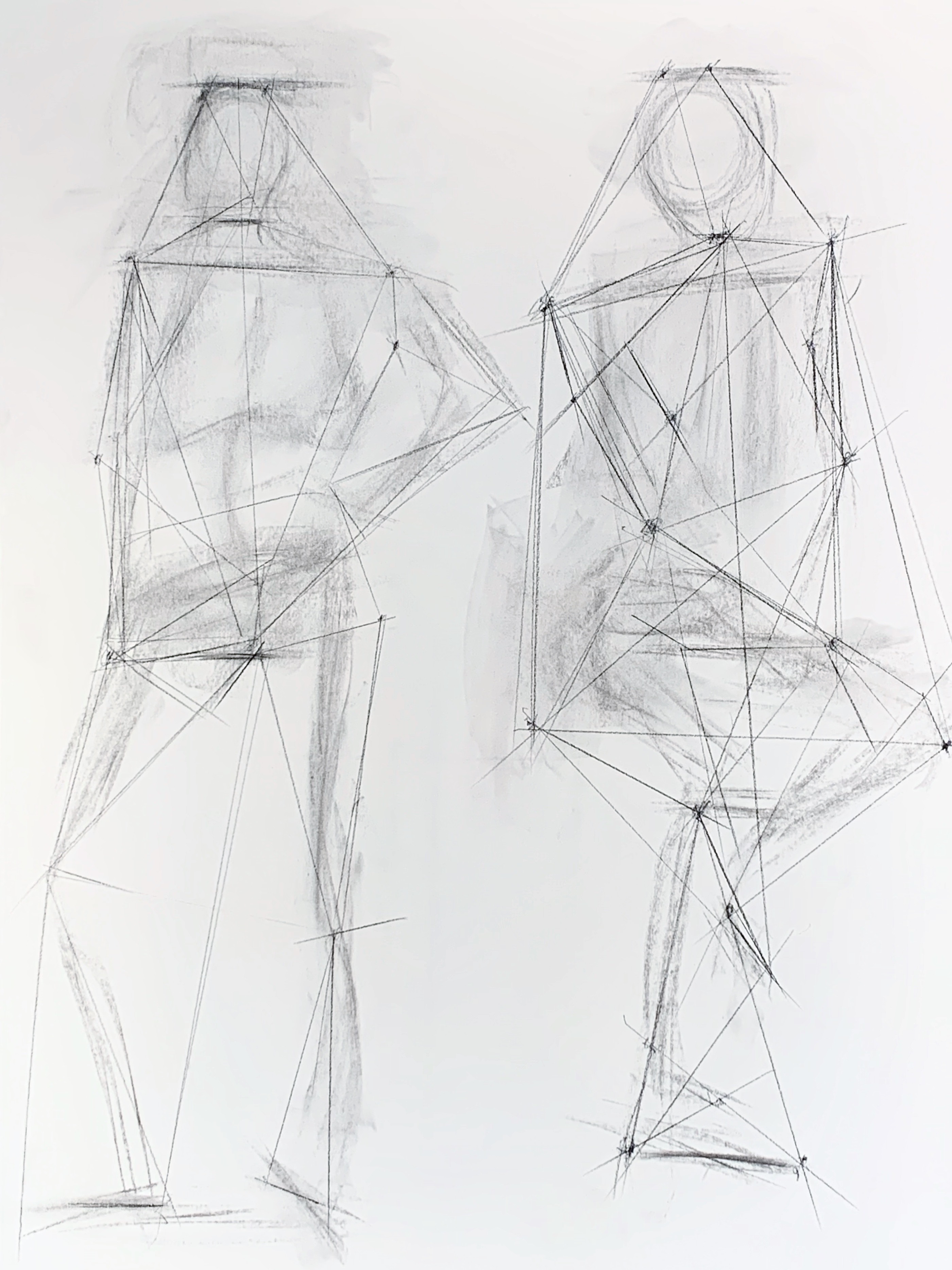
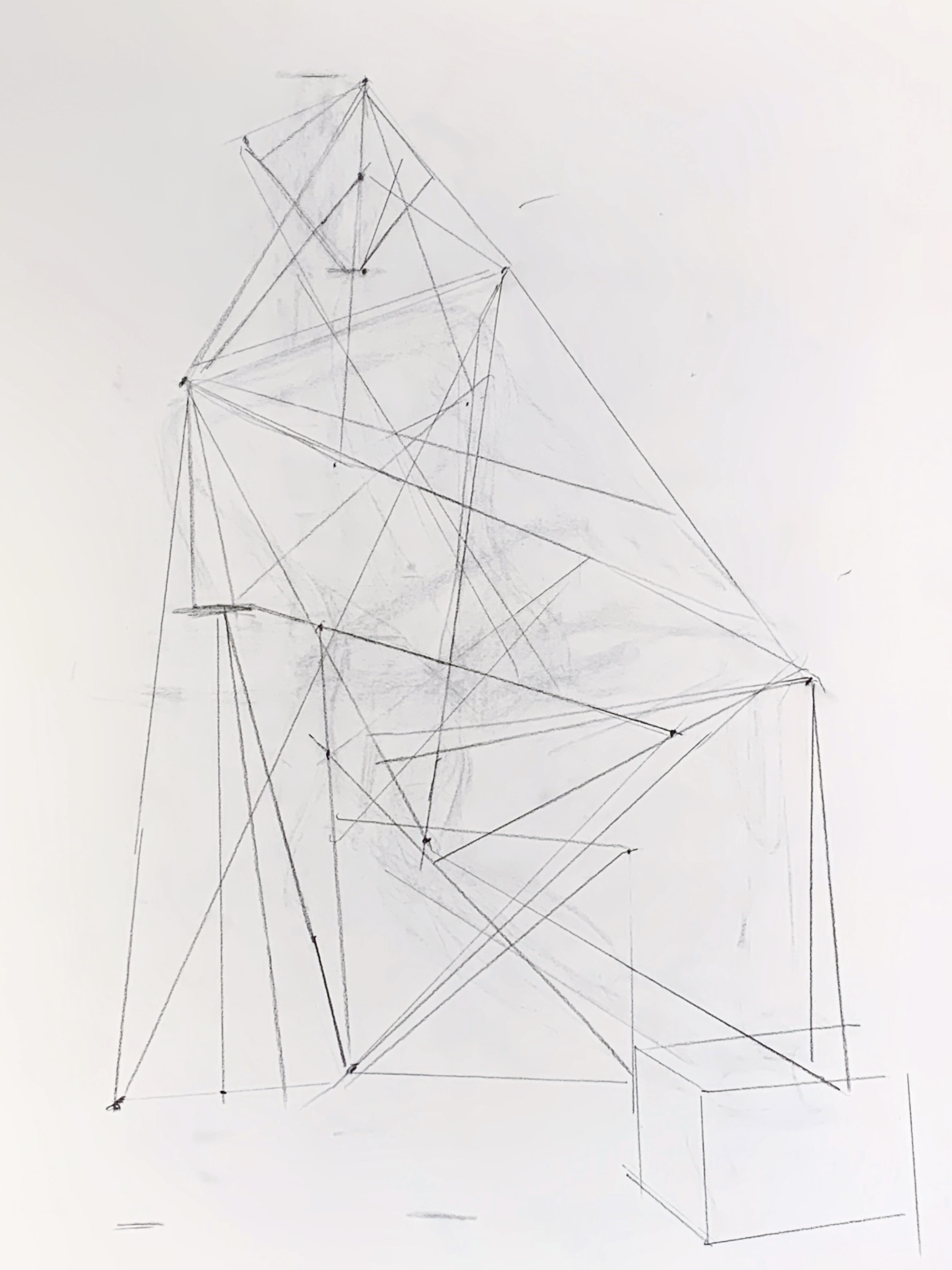
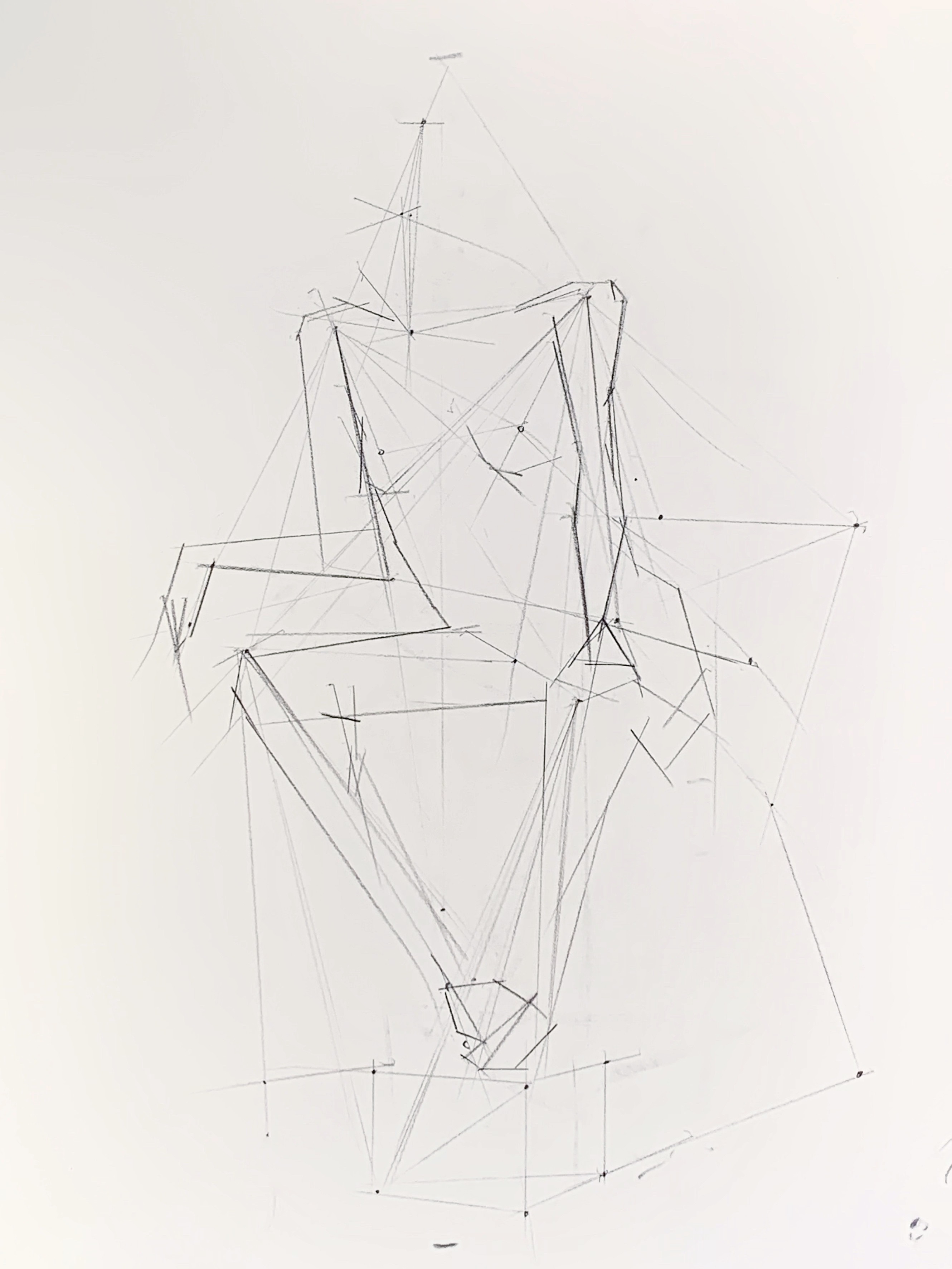
Planar Analysis
Charting the change in direction over the surface of a form. Expressed geometrically, with sharp, straight lines. Students will execute a self-portrait from direct observation, using planar analysis. Students will make at least three compositional thumbnails, focusing on the figure's relation to the four borders of the drawing and its location in space. Students are encouraged to represent at least half of the figure.
Materials: Viewfinder, drafting triangles, vine charcoal, charcoal pencils, erasers, on 22"×30" Stonehenge
Assignment Objectives:
- Transparent construction/rendering in layers, refining a gestural foundation geometrically
- Analyzing plane shifts across the surface of the figure while employing the three applications of sighting
- Create a composition that is expansive, dynamic, and balanced with the figure situated within a space
- Employ line variation to suggest depth and volume
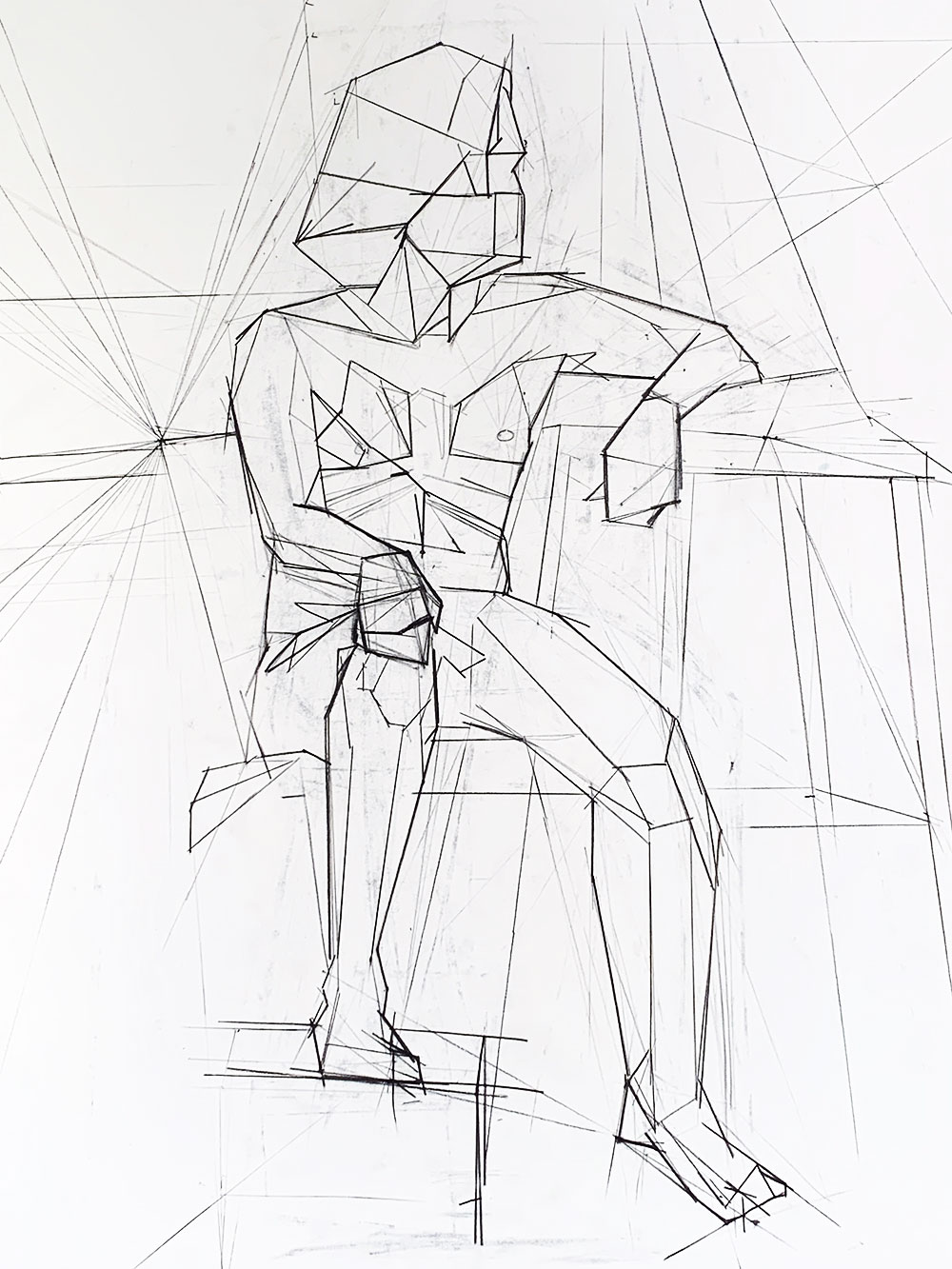
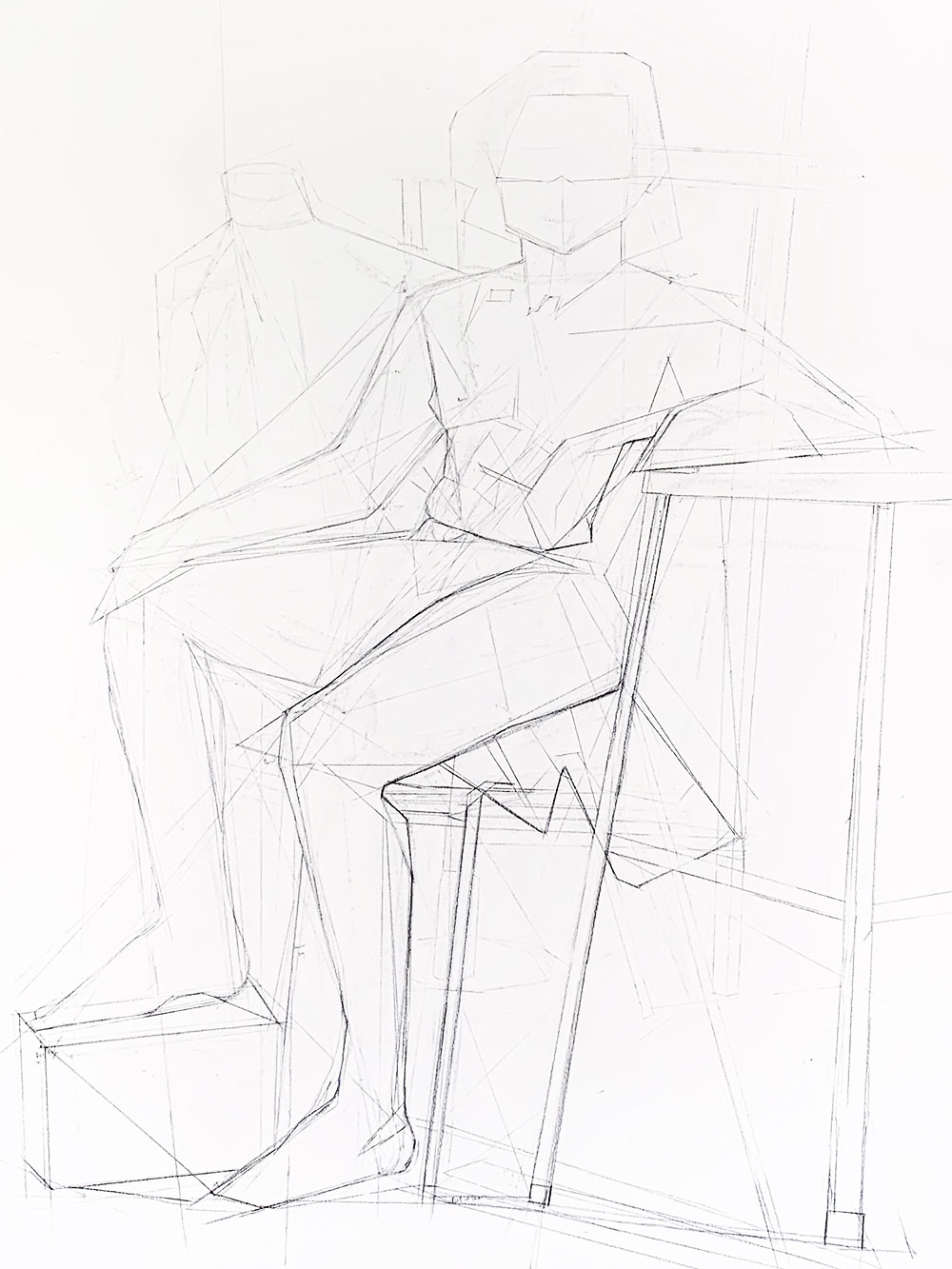
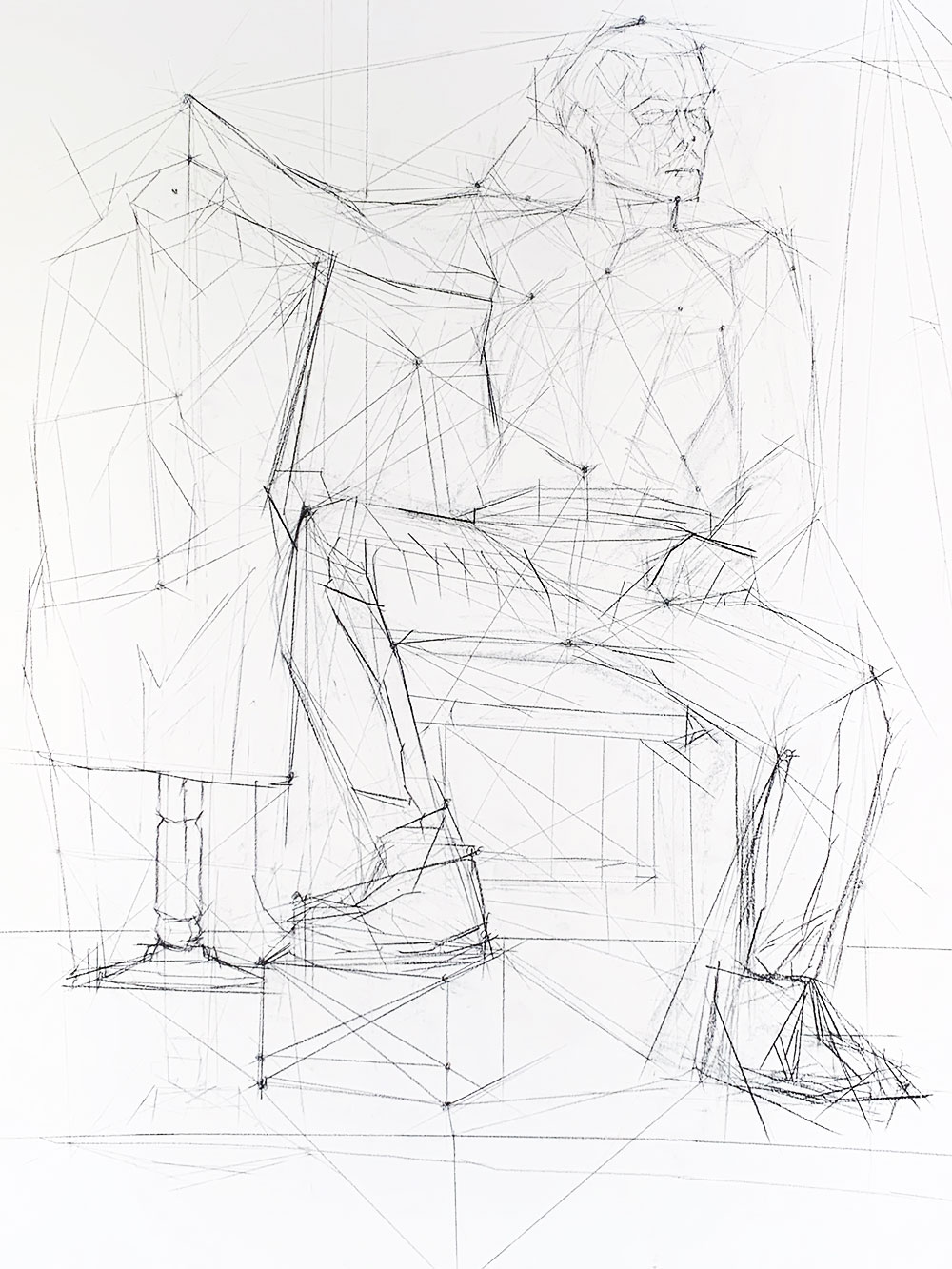
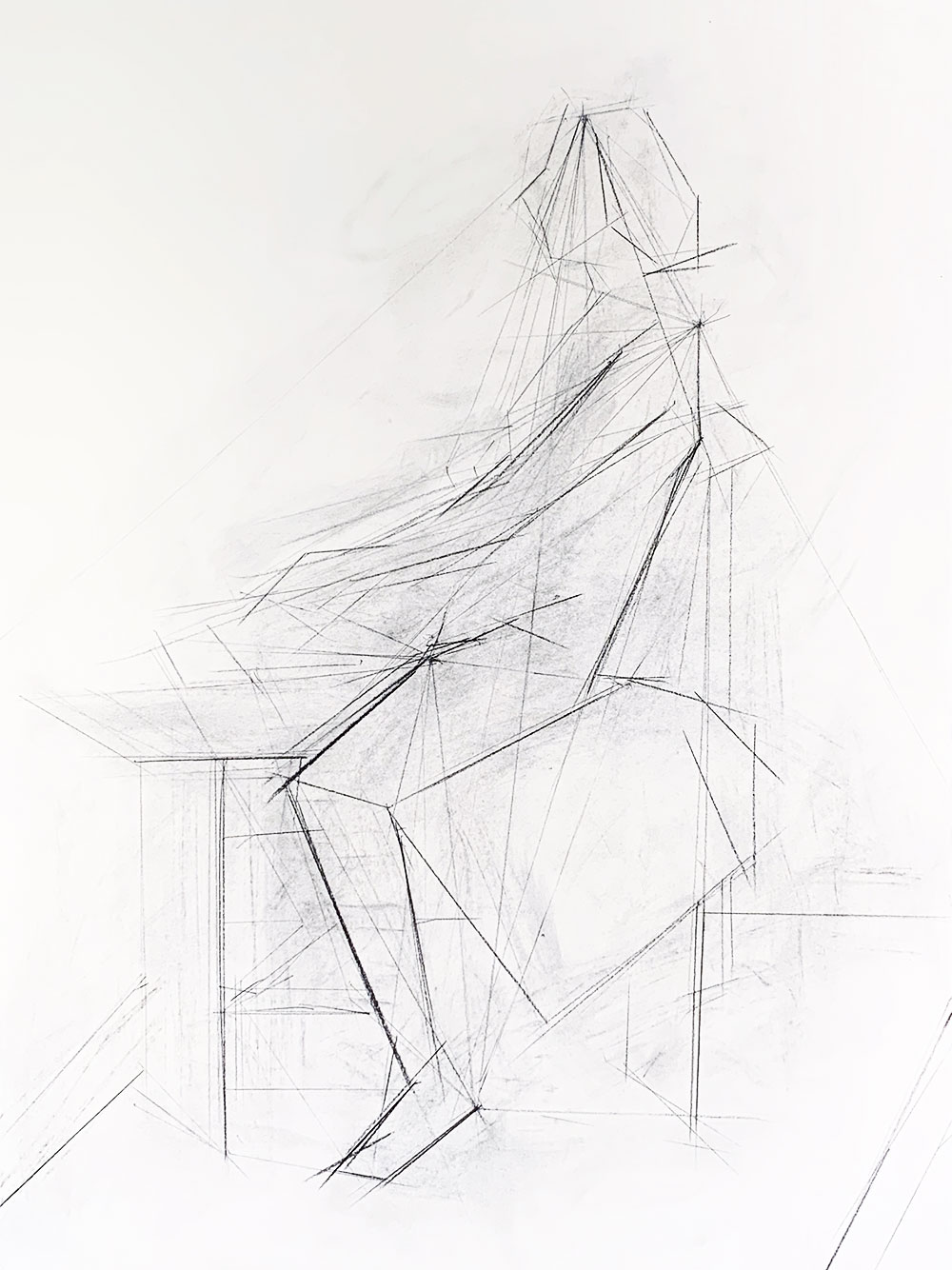
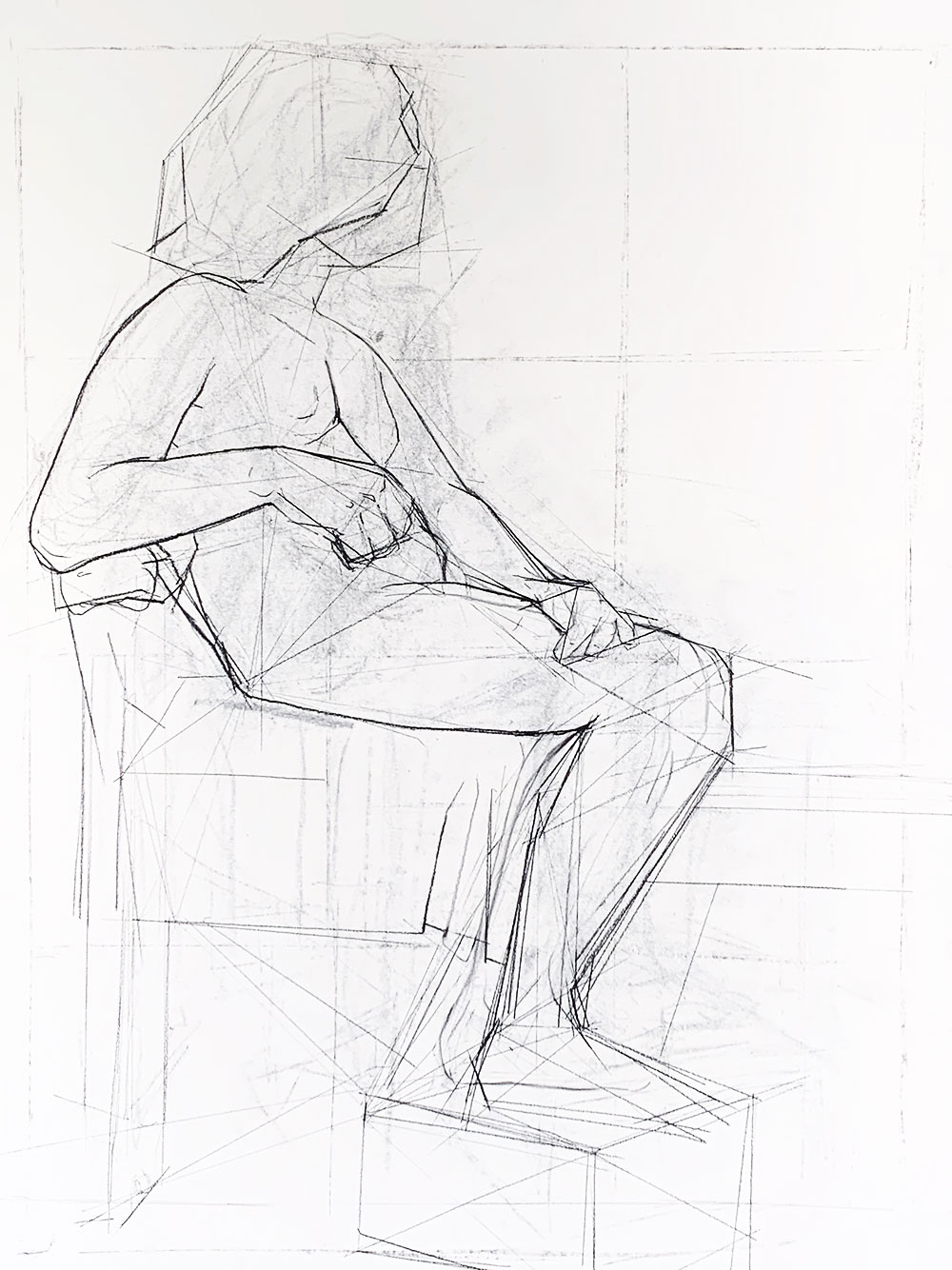
Reductive Value
Also known as subtractive value. A process of making a drawing by removing/erasing dark material (graphite, charcoal, etc.) from a surface, revealing light.
Students will make a single drawing of the model situated within a space. Students will develop the drawings in successive stages in a reductive manner, being sure to reevaluate and refine the entire space of the drawing in a unified manner.
Materials: Viewfinder, vine charcoal, compressed charcoal, charcoal pencils, erasers, stumps, on 22"x30" Stonehenge
Assignment Objectives:
- Reductive value, general-specific rendering with a full range of value
- Utilize the three applications of sighting for accurate, structured figures
- Create a composition that is expansive, dynamic, and balanced with the figure situated within a space
- Achieve a degree of resolution that is highly consistent and unified
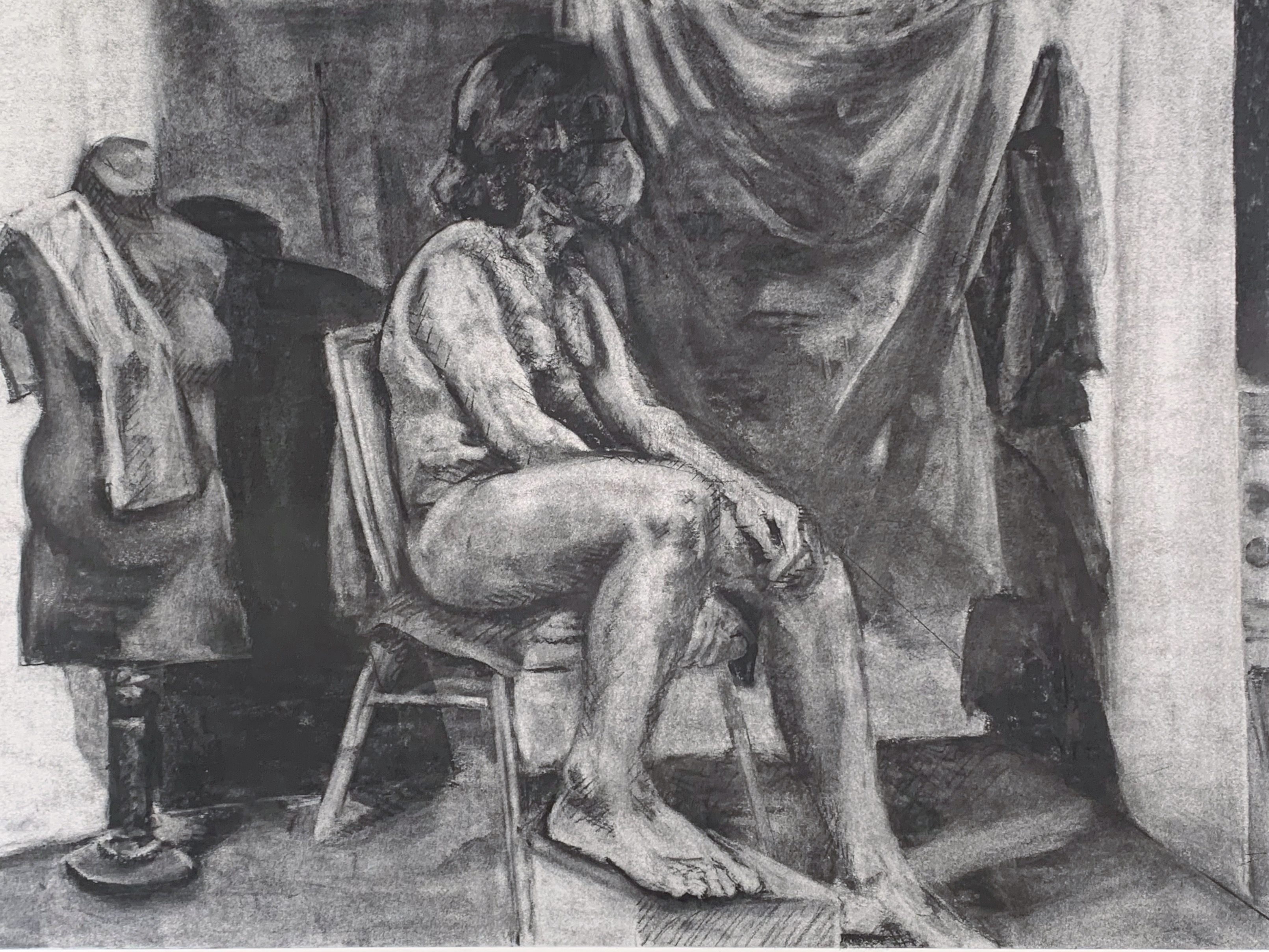
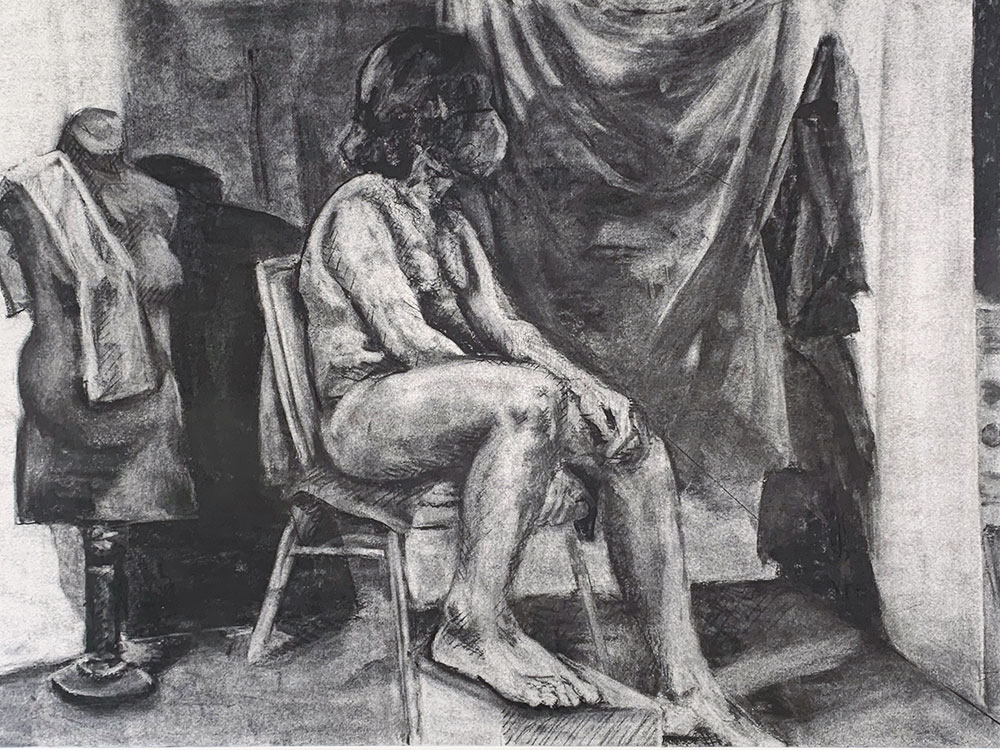
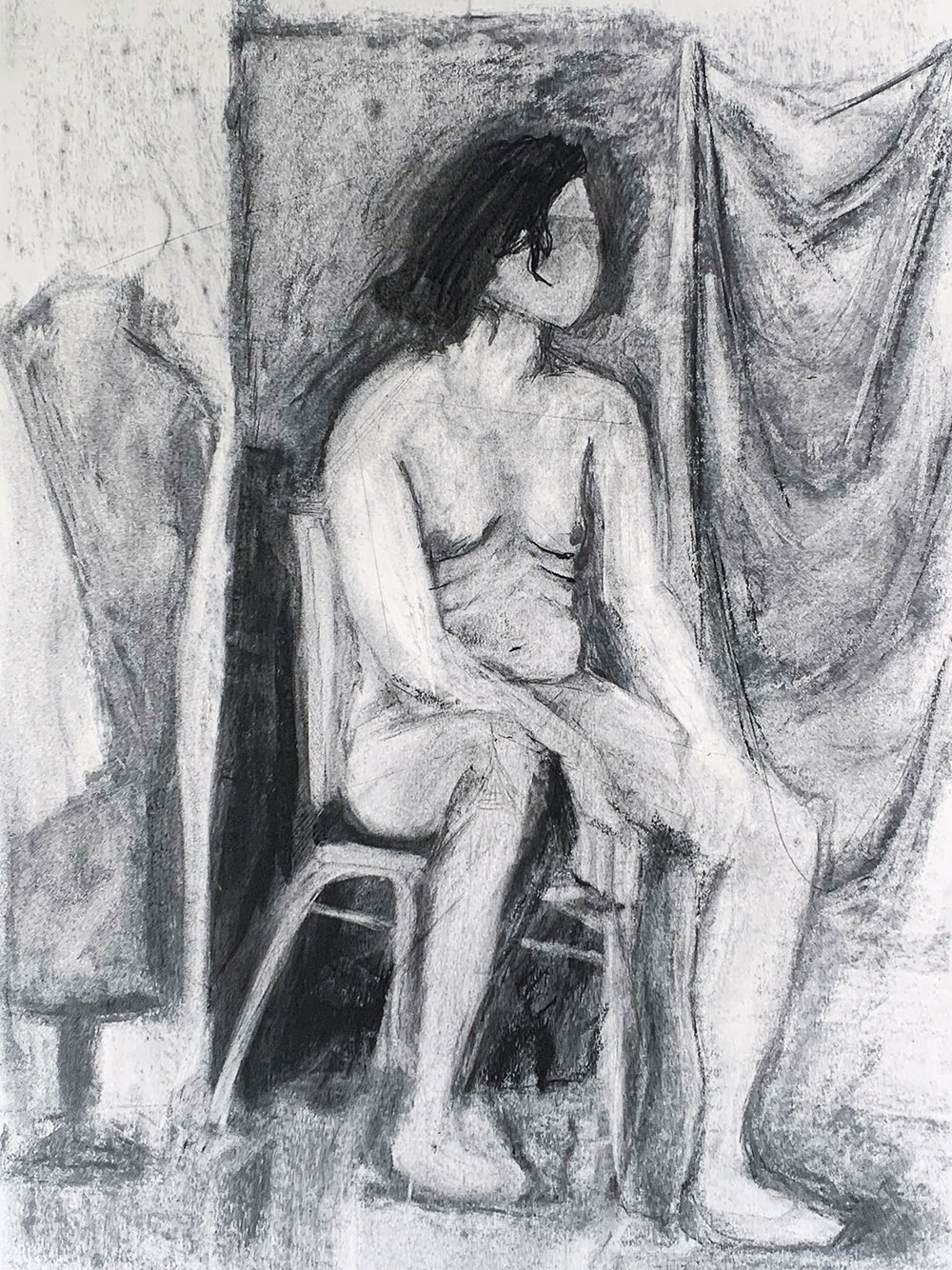
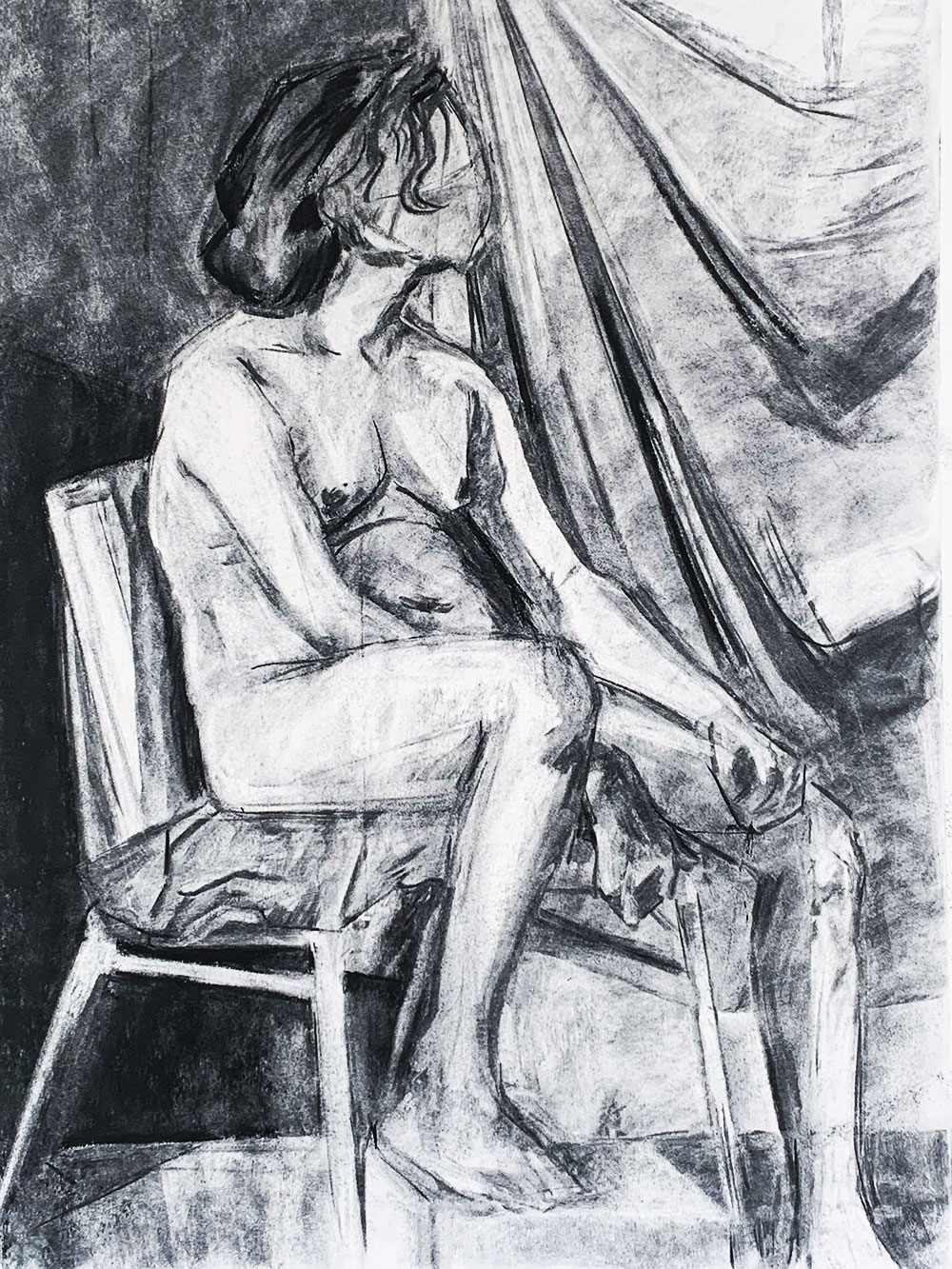
Heightened Value
A process of making a drawing by adding light and dark material (graphite, charcoal, pastel) to a toned/gray surface.
Students will make a single drawing of the model situated within a space. Students will develop the drawings in successive stages in a heightened manner, being sure to reevaluate and refine the entire space of the drawing in a unified manner.
Materials: Viewfinder, black and white acrylic, black and white compressed charcoal, black and white charcoal pencils, erasers, stumps on 22"×30" kraft colored Stonehenge
Assignment Objectives:
- Heightened value, general-specific rendering with a full range of value
- Utilize the three applications of sighting for accurate, structured figures
- Create a composition that is expansive, dynamic, and balanced with the figure situated within a space
- Achieve a degree of resolution that is highly consistent and unified
